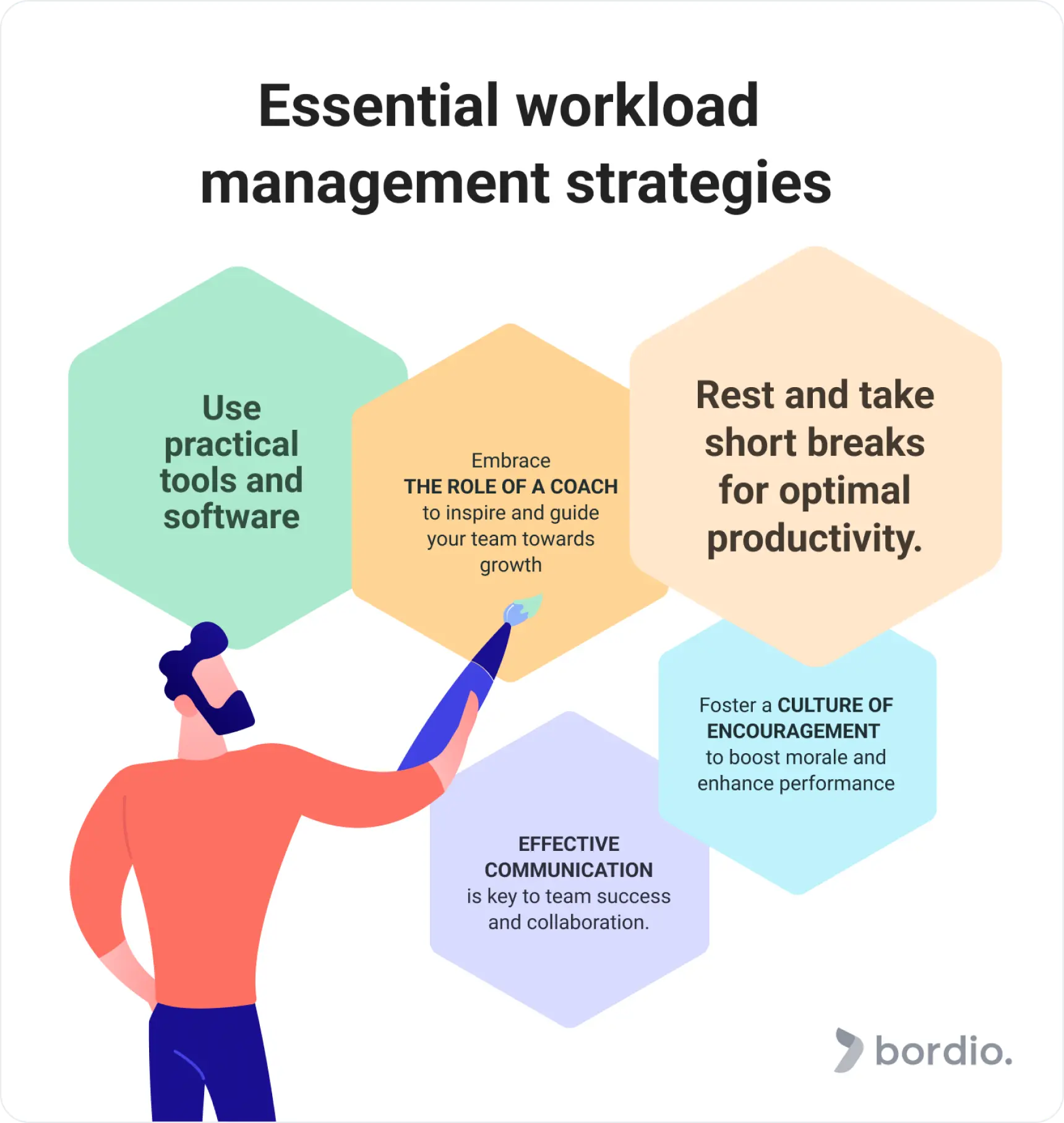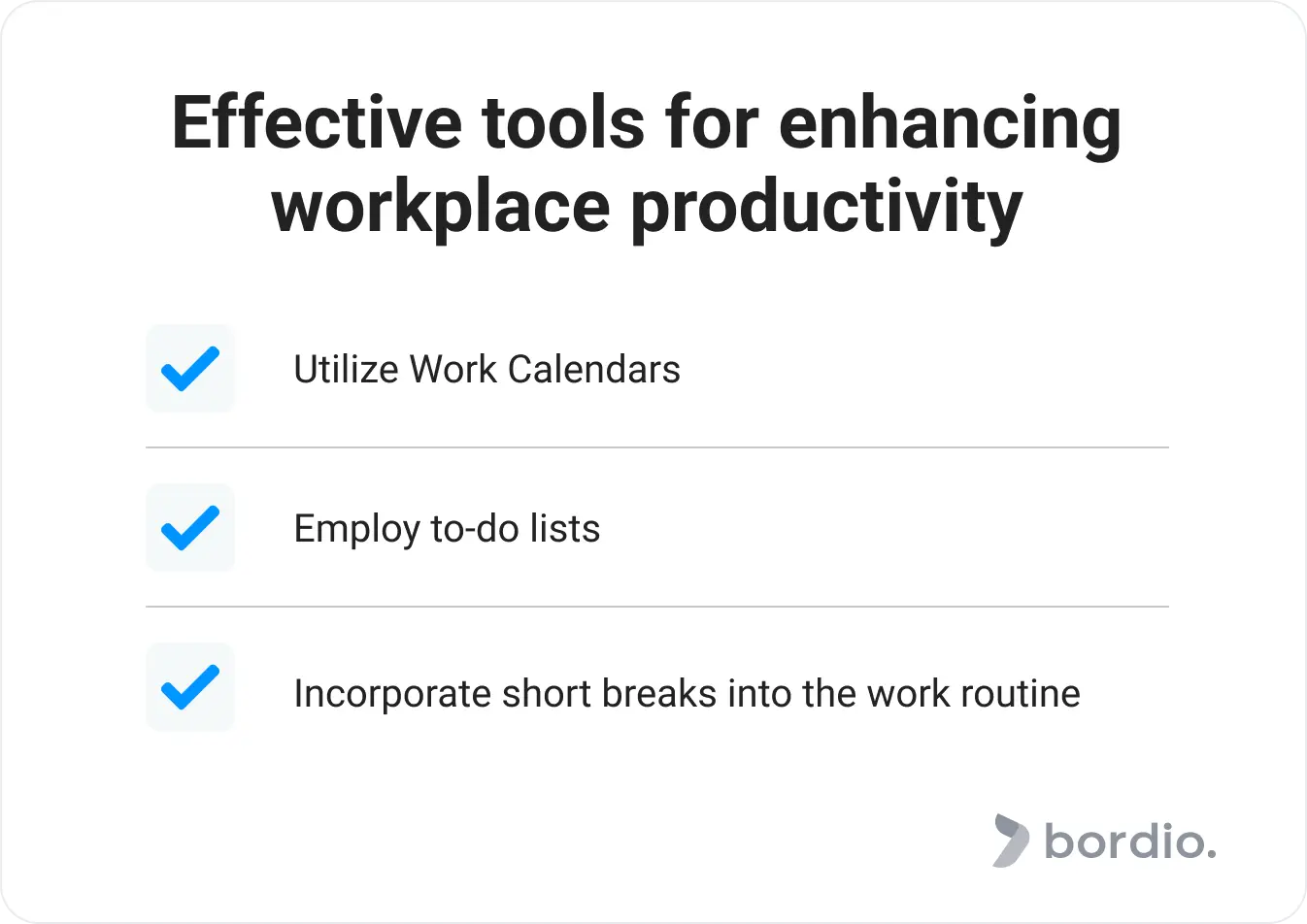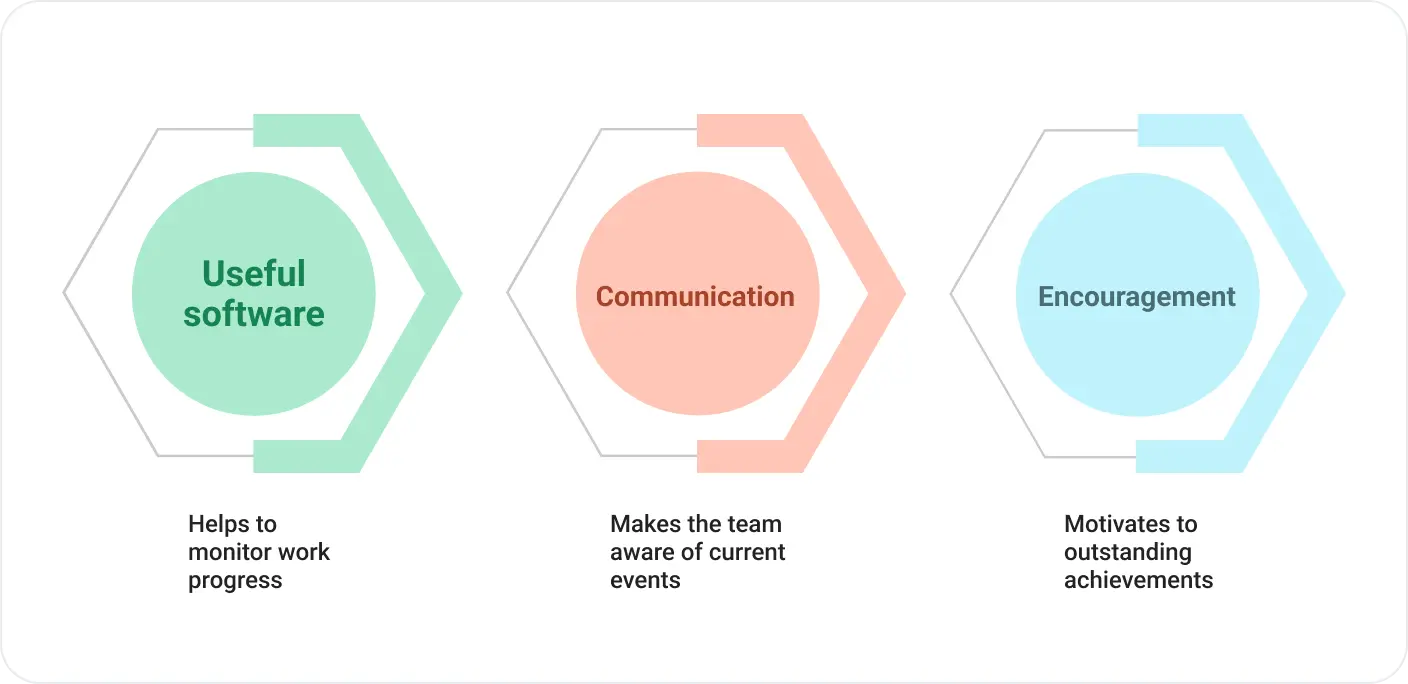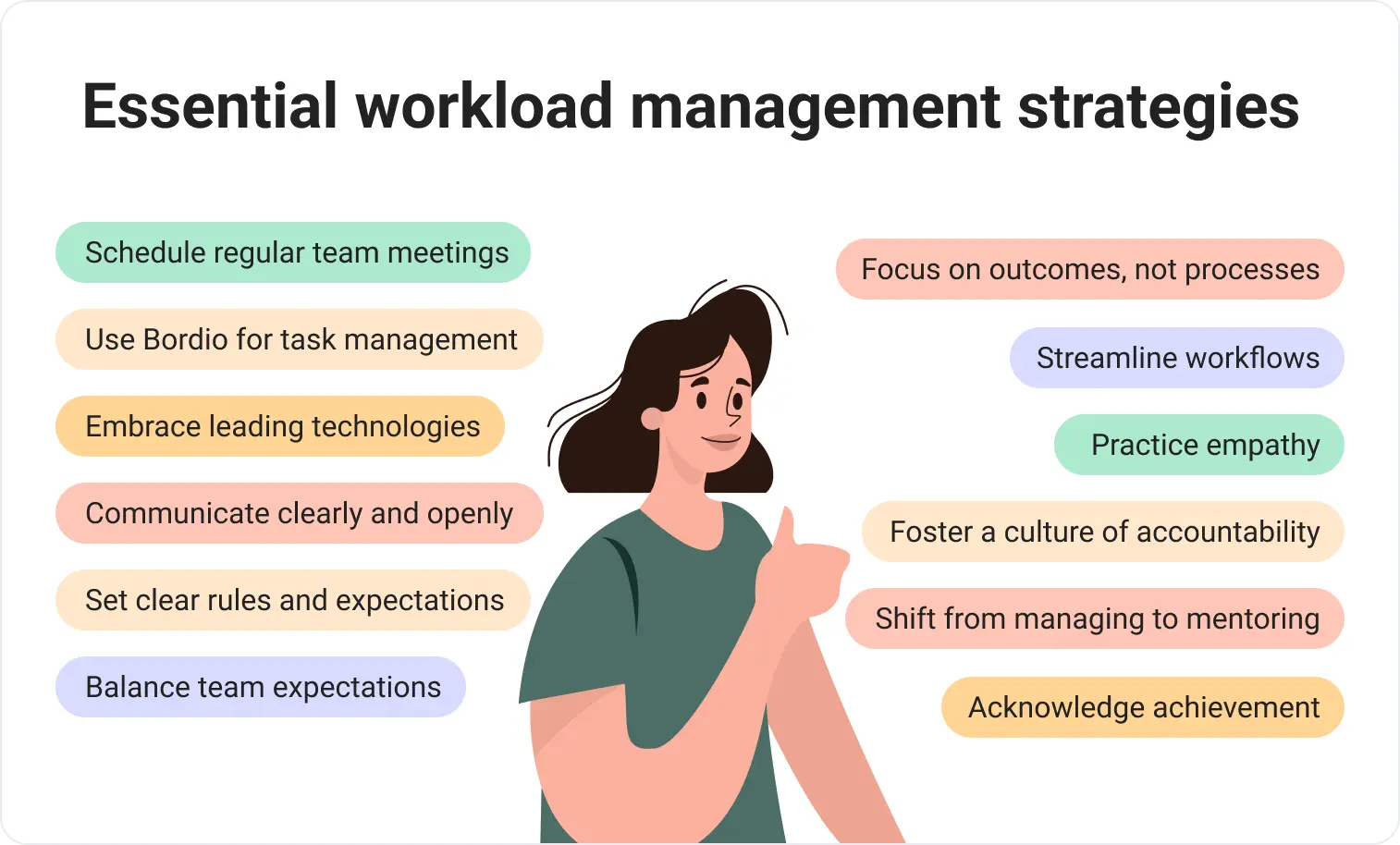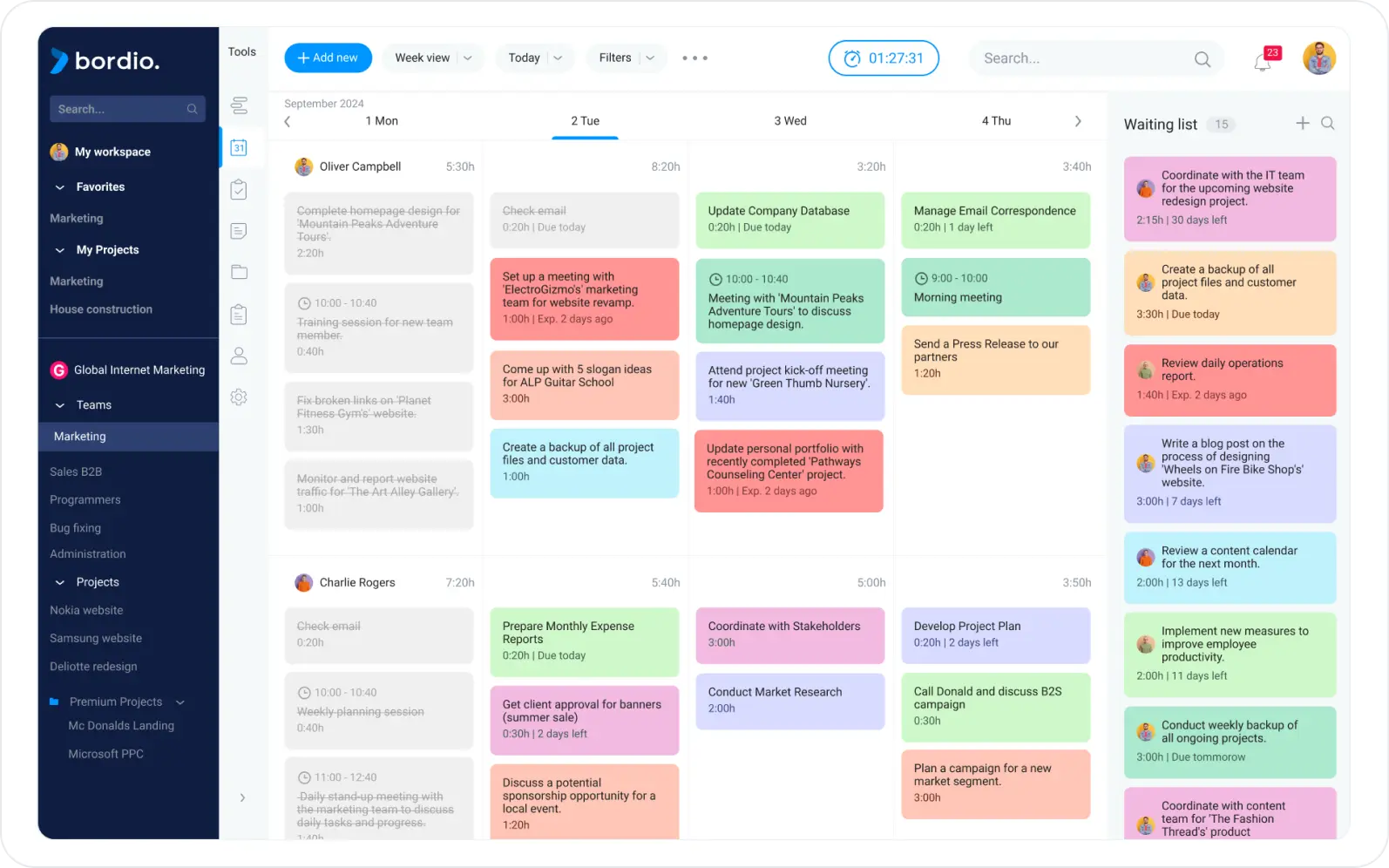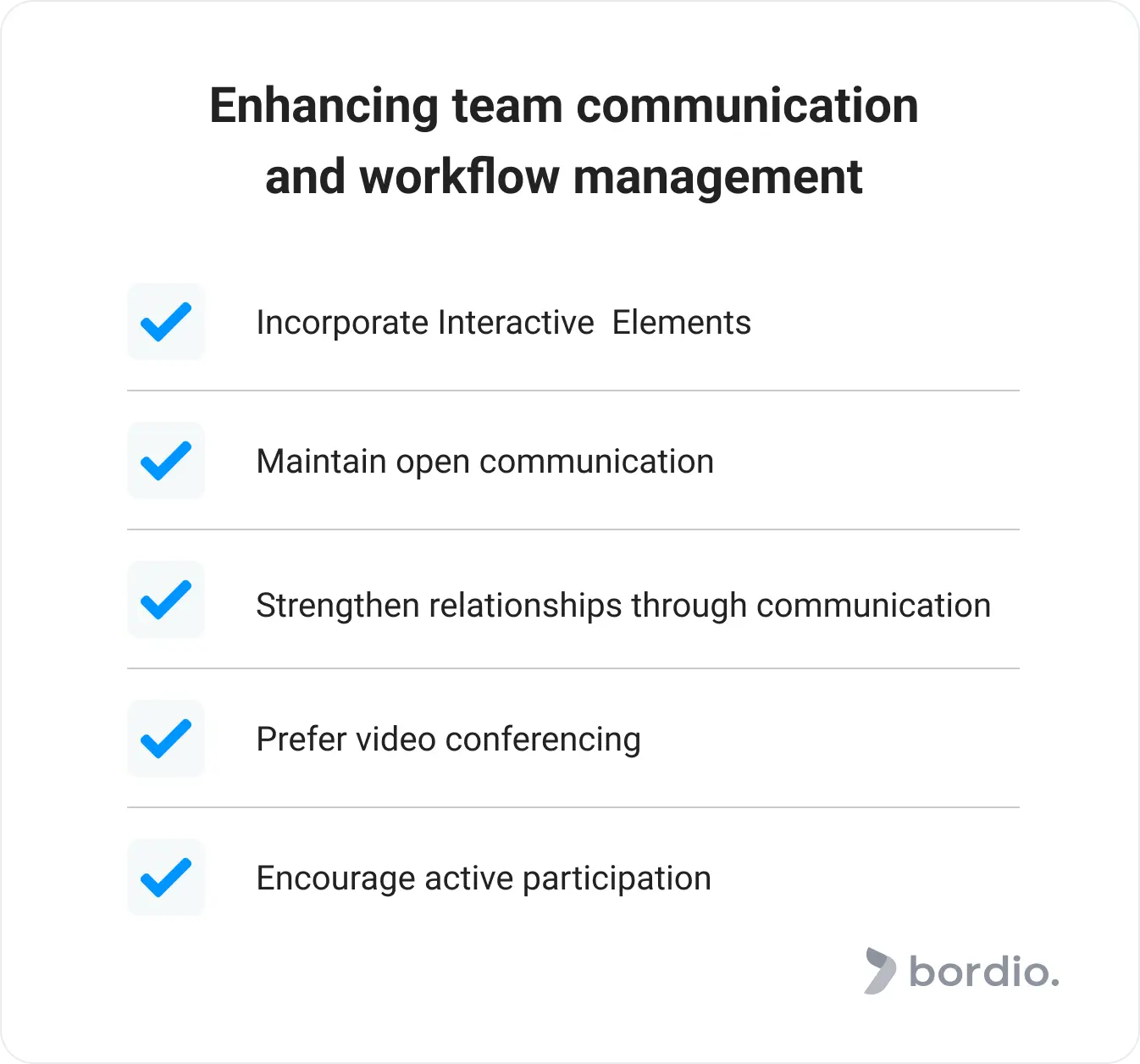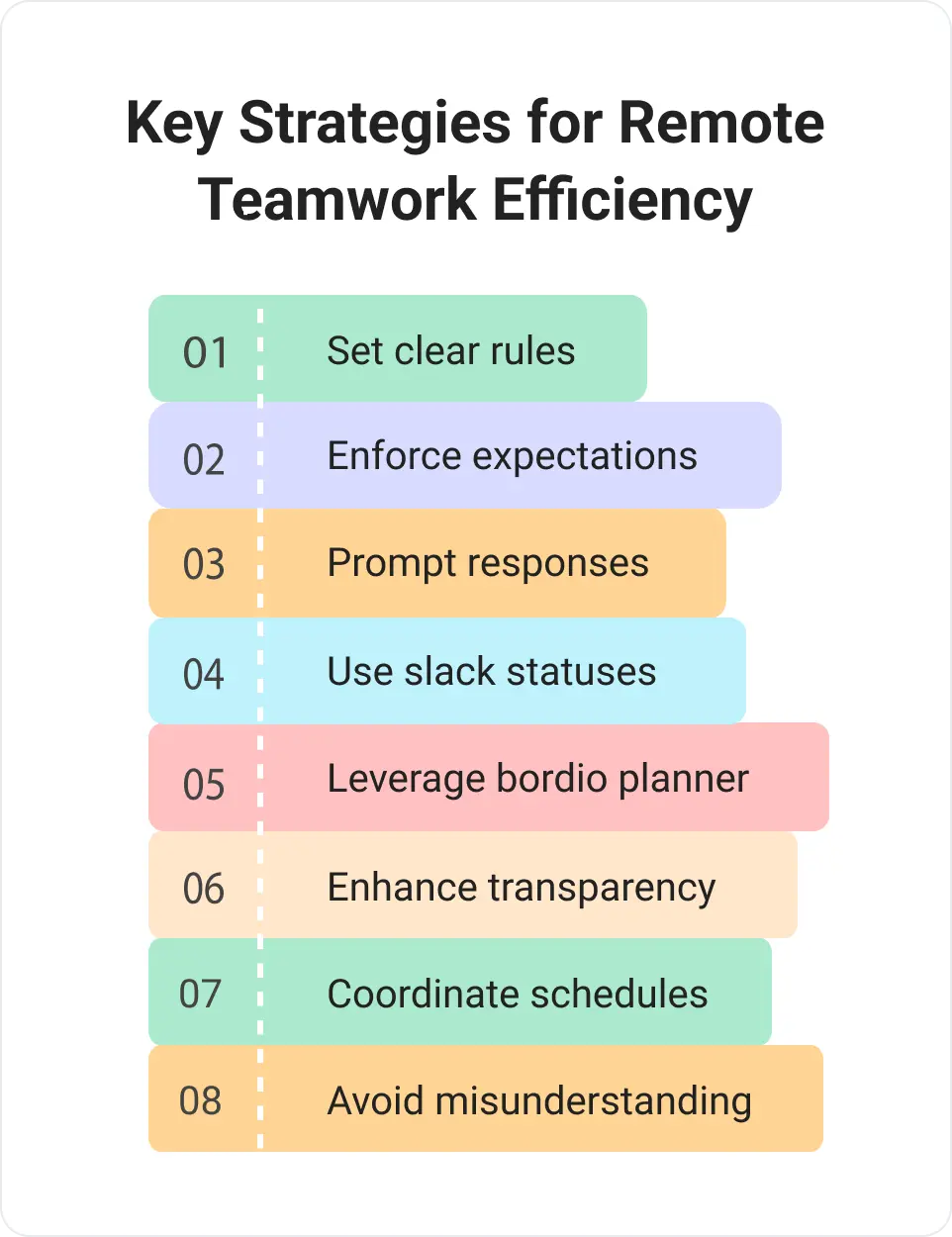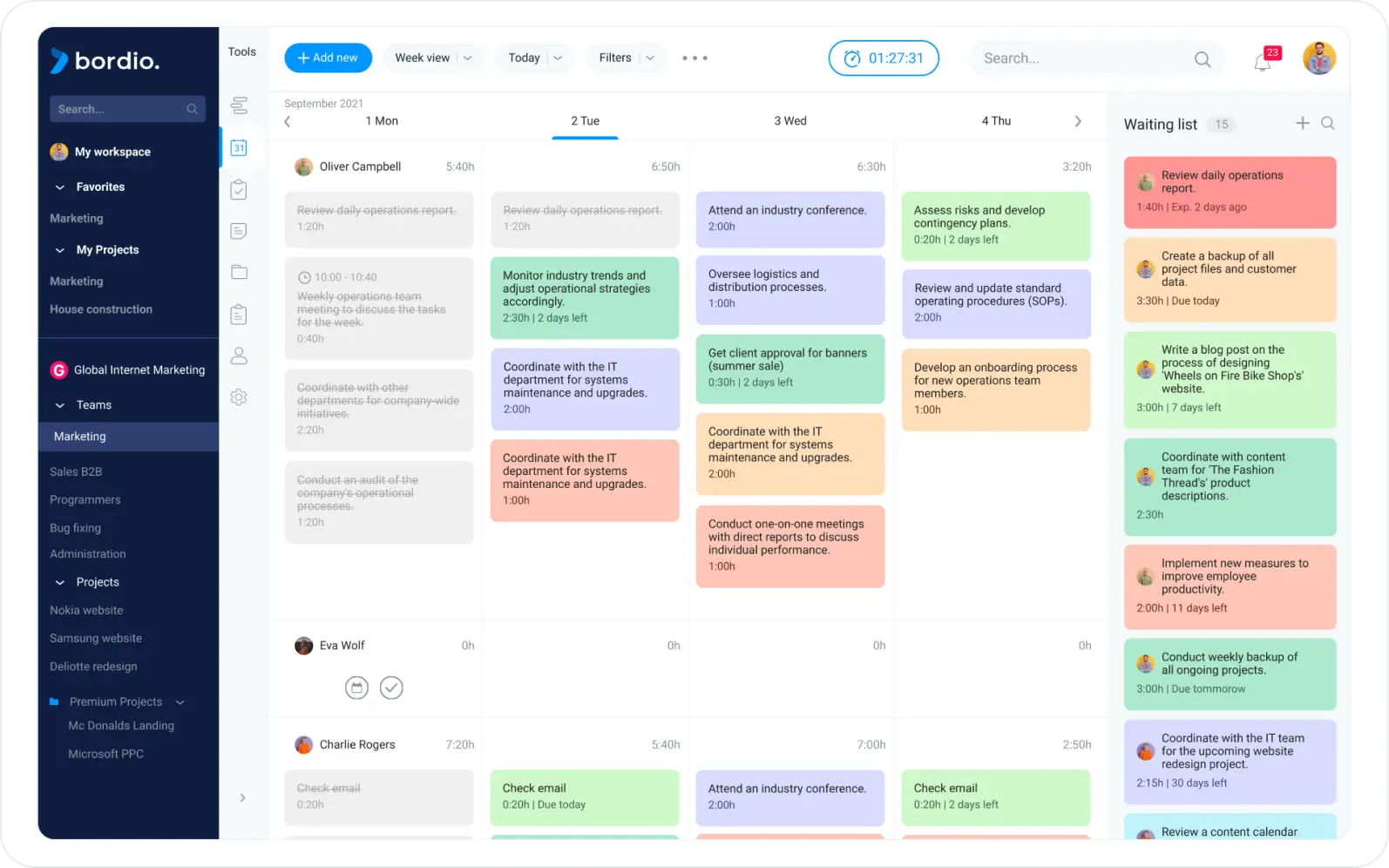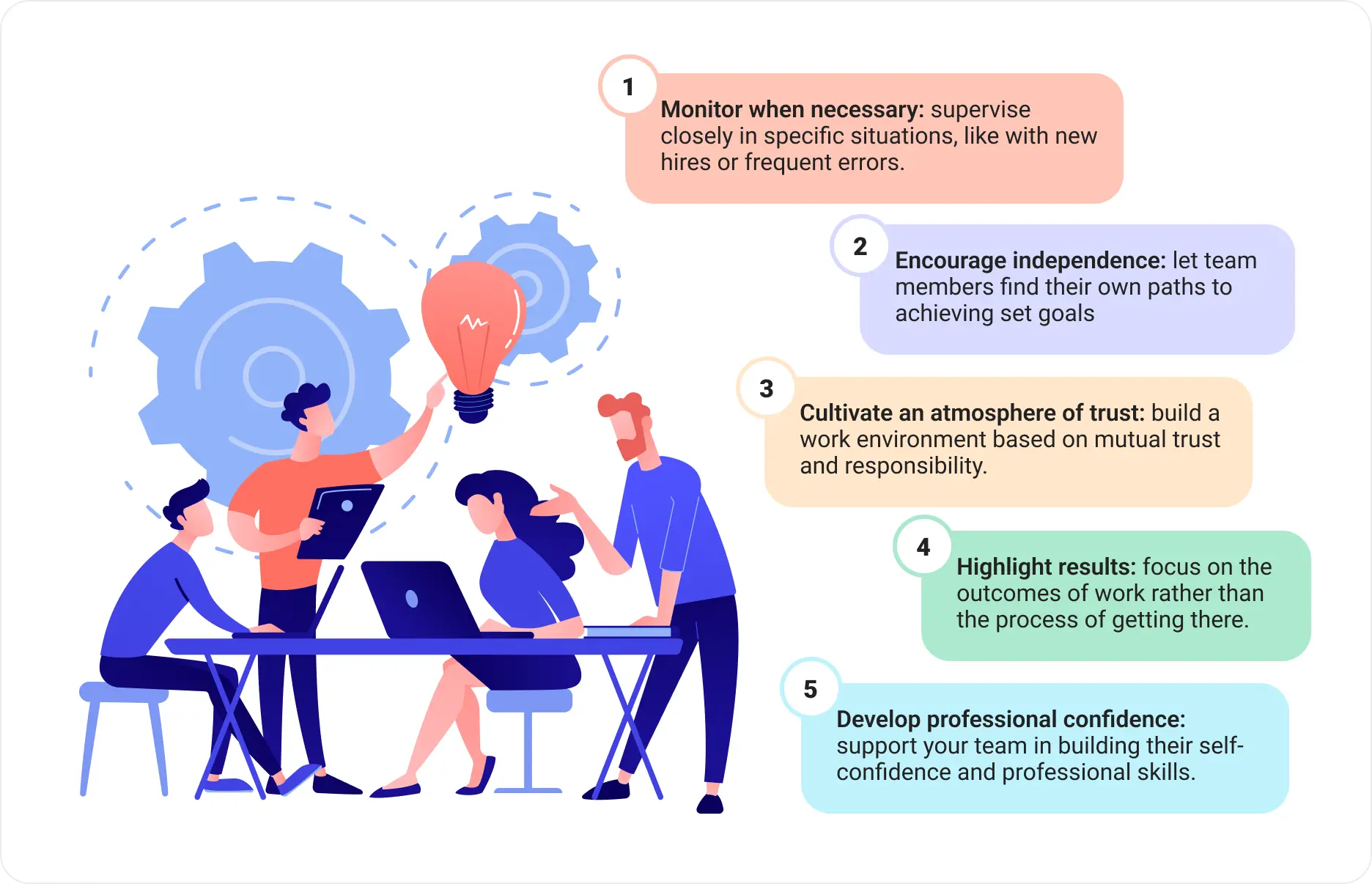Well, an exciting topic has arrived! Rather necessary. How to manage your workload and why it’s so important.
Let’s start by saying that managing your workload is cool! You are the master of your time and your energy. You use them effectively and get excellent results, achieving a work-life balance. When everything is in its place, finding and taking what you need is easy.
Imagine trying to write a report for the office, cook lunch, and watch your favorite movie at the same time. Sounds challenging! But once you turn on effective workload management software, everything will automatically transform and be distributed to the right places. After all, the main thing is balance. A balanced approach to completing the intended tasks helps to multiply the efficiency and quality of the tasks performed and, at the same time, get rid of stress and even enjoy the process.
All joking aside, for a business, a workload management strategy is one of the key ones. Effective team management is impossible without proper workload management. Team leaders face significant challenges due to overloaded staff and lack of knowledge of the necessary tools for effectively distributing the workload, which is ultimately reflected in the indicators.
This article focuses on critical strategies for enhancing your team’s capacity and efficiency, mainly focusing on the top twelve methods. Additionally, this article will guide team leaders, introducing the most effective tools and techniques to optimize team and uneven workload distribution, ensuring both productivity and balance in the team’s responsibilities.
Managing team workload: Strategies for balancing and monitoring tasks
Managing multiple projects and monitoring workload distribution is no easy task in a busy work environment. It’s easy to drop a ball or even several of them while juggling them tirelessly. If you spend too much time on one task, you may not complete another. As a result, everything falls out of hand, and the tasks assigned to the company are carried out poorly or, in some areas, are not carried out.
All that needs to be done is to balance the amount of work available with the project tasks and the time allocated for its implementation.
To do this, you need to use practical tools and instruments such as:
- Work calendars and to-do lists. With their help, monitoring organizational stages, allocating time, and receiving necessary notifications and reminders is easier.
- Short breaks and rest. According to many studies, this helps to reboot the brain and body and significantly increases productivity.
In simple terms, workload distribution is when you know what needs to be done, how long it will take, and how to do it so as not to work yourself until you drop and have a nervous breakdown!
How to manage workload for employees: Overcoming the challenge of overwhelm
Workload is a big challenge for both managers and employees. Sometimes, it seems to you that you are face to face with a massive load of work, not knowing where to start and how to get it done, and this feeling is oppressive, exhausting, and leads to burnout.
It is essential to know about essential tools to cope with the challenge:
- Useful software tools help significantly distribute tasks and assignments and help to monitor work progress effectively.
- Communication with the team is the second important tool. Live or virtual communication with employees is constructive, making them aware of current events.
- Encouragement. You will be surprised, but sometimes a simple ‘Thank You’ or ‘Well Done’ can work wonders and motivate you to outstanding achievements.
How to manage team workload: Overcoming information gaps in task distribution
The awareness of that very team plays a significant role in effective team management and workload management. Each employee of each level must be fully informed about the work he performs and the project as a whole. In other words, he must see the whole picture of what is happening and clearly understand his role.
In turn, managers must provide them with all the necessary information and fill in any information gaps.
The use of online task managers is an important communication tool with the team, which helps to keep them constantly informed.
Efficient strategies for managing team workload and combating distractions
Distractions are a severe problem that can significantly affect productivity; no one is immune from this. We are all human! What is happening around you disrupts your focus, and it cannot be easy to tune in and concentrate on essential things.
Dealing with distractions is not easy, but it is possible. Time management can help us! Use time organizing tools and schedule planning apps, break tasks into parts, distribute them, and start implementing them individually.
The second important step is to escape to a quiet place, away from the noise and bustle. This helps you calm down and focus on essential aspects.
Pull yourself up every 5-10 minutes, walk, close your eyes, and practice breathing. Practice this approach until it becomes a habit. Remember that focusing on what is important is the key to effective work.
Intensification of challenges with reduced communication and transparency
Another significant negative factor that affects workload management is a lack of communication. Reduced or lack of communication at any production level leads to lower performance. An employee or team member unaware of planned changes continues to work in the wrong direction, simply wasting time and energy, ultimately demotivating.
The transparency factor is also significant, as it is the cornerstone of trust, a major factor in practical cooperation.
Improper workload management practices, excessive workload, and inefficiency can often cause these factors.
To solve these problems, it is essential to establish communication channels in the company. Active meetings, working discussions, openness, and incentive policies are essential for reducing the negative factors mentioned above.
Mastering the art of managing team workload efficiently: Essential strategies
Effective workload planning and management are crucial for team productivity and morale. Here are some essential tips to master workload management, ensuring tasks are handled efficiently and team members remain engaged.
1. Prioritize consistent team check-ins
In our wild and fast-changing world, staying connected and maintaining contact is essential. Regular meetings with your team are very productive and help improve corporate morale. Talk, introduce, discuss, listen – all these are integral to team and workload management.
- Schedule Regularly: Set a fixed time each week for these check-ins. Consistency is key!
- Keep it Short and Sweet: Focus on quality, not quantity. Please don’t overdo it or overwork yourself. 5-10 minutes will be enough.
- All Voices Matter: A good project manager who motivates every team member. No one should feel left out or less significant. You need to be able to listen and hear everyone.
- Choose the Right Format: Choose the appropriate communication format- individual meetings or a group format. Based on the needs and size of the team.
- Beyond Work Talk: It is essential to discuss not only business. We must strive to build warm, mutually trusting, and pleasant relationships.
- Flexibility Within Framework: Adaptability regarding meeting time, place, and format is highly recommended. It is important to adapt to different challenges and situations, especially when this directly affects work productivity, team motivation, and increased self-esteem.
- Focus on Connection: Remember, these check-ins are not just procedural. They’re about fostering a sense of togetherness and keeping the entire team and spirit high.
These tips will help your team unite and work together more effectively.
2. Leverage workload management software
Using software such as Bordio can greatly improve the efficiency and effectiveness of team task management.
With Bordio, team members can easily see the total estimated time for each task, clearly understanding each employee’s daily workload. This feature helps you manage and balance workloads more efficiently. You can see multiple tasks and events with estimated times, giving a complete picture of the team’s workload each day. When tasks are assigned and classified as “projects,” they are also displayed at the team level and provide visibility to individual and group tasks.
This Bordio functionality fits perfectly with the need for effective team workload management, as it allows project managers to track and balance the workload of each team member, ensuring that no one is overworked or underutilized.
Integrating Bordio’s tool in this context provides a practical example of how technology can facilitate the effective management of workloads, aligning with the overall theme of the article.
3. Harnessing technology for effective workload management
In mastering workload management, adopting and skillful use of leading technologies are critical to workload management. This is especially true for those teams that work remotely.
As we saw with Bordio, using project management tools and software technology offers several solutions to improve team efficiency and coordination.
Asynchronous Communication: Messaging apps Provide a more convenient and faster way to communicate than other methods, allowing team members to share updates and quickly communicate according to their schedule. This approach reduces stress and clutter and is more hassle-free and speedy.
Productivity and Scheduling Tools: Bordio’s online tools, like its to-do list and best calendar planner, ensure smooth synchronization of tasks and schedules between team members. These tools help organize and visualize workloads, making managing and prioritizing tasks easier.
Enhancing Remote Collaboration: Tools for taking screenshots and applications like Loom for screen recording can add fun and ease to remote collaboration, transforming it into a less boring experience. You can also create small videos using a video editor online to share your ideas remotely with your team in an engaging way. Moreover, you can use a Vimeo alternative to host and share these videos, providing additional features and customization options for a more professional presentation.
Encouraging Tool Exploration: Experimenting with different technologies is the best way to find what best suits your team’s needs. Encourage team members to share their preferred tools, which can improve the workload management process.
4. Prioritize clear and open communication
In addition to existing tools, it is possible to introduce interactive elements in meetings, like Zoom icebreakers, to reduce fatigue from multiple meetings. It is important to choose activities that fit your company’s culture and values so that they fit harmoniously into the professional context.
Effective communication is key to effective workflow management, especially in remote and distributed teams.
Regular and open communication within the team is critical. A leader must communicate with each team member, clearly deliver his goals and vision, and listen carefully to their opinions. Fostering a team’s open communication culture can greatly improve their effectiveness and comfort level at work.
Quality communication strengthens interpersonal relationships and contributes to achieving organizational goals. Effective team communication improves understanding of priorities and promotes successful collaboration and problem-solving.
As a workflow management tip, video conferencing is preferable for discussing key topics such as strategic issues or projects. While some remote workers prefer audio calls, video conferencing can help make communication more personal by facilitating active exchanges and creating a personal atmosphere. This can lead to faster and more efficient problem-solving, making this approach a valuable scheduling and workload management tool.
5. Define clear rules and expectations for effective workload management
It is important to set and enforce rules and expectations for each team member for effective teamwork, especially when working remotely from different locations. Remote communication sometimes decreases the level of responsibility and slows down the speed of response to tasks.
For example, if someone on the team doesn’t respond to messages immediately, it can create confusion or slow the workflow. To avoid this, you can set rules for how quickly you need to respond or how to show that you are busy, for example, using Slack statuses.
Workload Management Tip with Bordio: Utilize Bordio’s day planner to enhance transparency and coordination. These calendars allow everyone to see each other’s schedules. This helps you understand when someone is busy and avoid misunderstandings. If someone doesn’t respond, you can quickly look at their Bordio calendar and see why they can’t respond immediately.
6. Balancing team expectations in workload management
As you move toward managing your team workloads, especially in a remote or hybrid work environment, understanding and managing your team’s expectations is crucial. These changes often force adaptation to new rules and circumstances that may differ significantly from traditional office environments.
Changing work dynamics and individual perceptions of how a workload management tool should work can lead to frustration or misunderstanding.
Some team members may lose interest, leading to decreased productivity, or even leave the organization. Neither scenario works for the benefit and well-being of the company. As an effective manager, it is important to take an active role in solving your team’s problems. Try to find a balance that meets the needs of individual team members and ensures effective workload management. This strategy creates a happier, more effective team, which ultimately benefits the overall success and stability of the organization.
7. Focus on outcomes, not just processes
In the area of workload management, one effective technique is to empower team members. It’s important to give team capacity and focus on their goals and progress rather than micromanaging every step of their work.
Sometimes, you need to closely monitor your work, such as when you hire new employees, or someone frequently makes mistakes. However, too much control can hinder the team’s independence and self-confidence.
It’s best to set clear goals, give your team the right tools and tasks, and then let them use their experience and skills to achieve them. This approach helps to develop independence and creates an atmosphere of trust and responsibility. Focusing on desired results and allowing freedom to achieve those goals helps create professional and confident employees.
8. Streamlining workflows
It’s crucial to optimize and streamline workflows for effective workload management, especially in remote settings. Eliminate unnecessary steps like duplicated reports or lengthy approvals to reduce frustration and improve efficiency. Regular process reviews are key to both workload management and smooth and effective team operations.
9. Practice empathy
To effectively manage your workload, it is critical to continually optimize and improve your work processes, especially in a remote work environment. Eliminate unnecessary bureaucratic steps, such as duplicate reports or lengthy approvals, to make the process less tedious and more efficient. Regular reviews are key to successfully managing workload and keeping your team running smoothly and efficiently.
10. Foster accountability for effective workload management
When managing your workload, a culture of accountability is critical to success, especially in remote or hybrid work environments.
Some responsible team members clearly understand the tasks and deadlines assigned to them and naturally strive for excellence without constant reminders. As you work to strengthen your accountability practices, remember that it is important to set clear expectations.
Vague formulation of tasks can lead to procrastination and lack of concentration. Ensuring your team knows exactly what is expected of them when assigning tasks will help develop responsible and proactive work skills.
11. Shift from managing to mentoring
When mastering workload management, use coaching rather than simple management. This style of improving workload management, which combines coaching and mentoring, is especially effective in remote work environments where traditional workflow control is significantly limited. Integrating mentoring software into this approach can further enhance support and guidance, ensuring that team members receive timely feedback and development opportunities.
Instead of mechanically repeating old management models, introducing new methods and approaches is advisable to help you focus on building trusting and strong working relationships with your team. A mentoring approach often leads to greater trust and improved performance.
12. Acknowledge achievements
When managing workload effectively, it is critical to recognize and honor both individual and team successes, regardless of size.
For example, if a team member is performing a complex task that requires a lot of time, it is important to emphasize this accomplishment in team meetings. This simple action by a manager can greatly increase team motivation and morale, positively contributing to the overall work environment.
Final reflections on How to manage workload
The strategies described above will help you with the complex task of managing your workload professionally.
Although these tips may seem simple, their implementation and practical application require effort and, most importantly, patience.
Mastering the right software to manage your workload is a challenging but rewarding experience. Gradually adapting and improving your approach in this area will benefit you, your team, and your organization in the long term.

